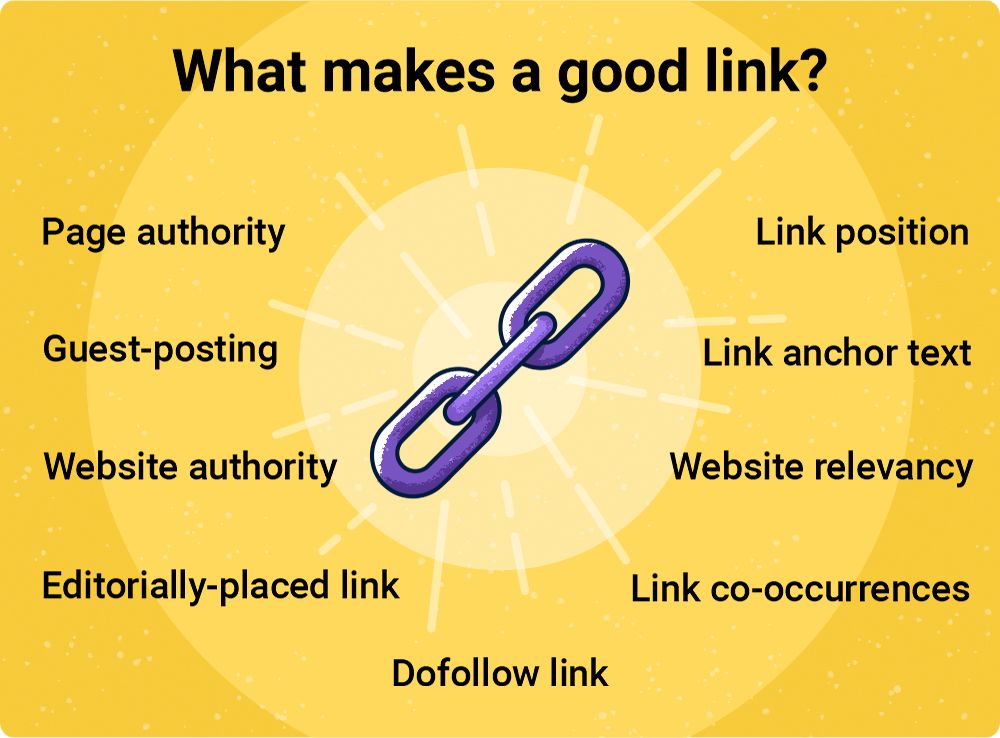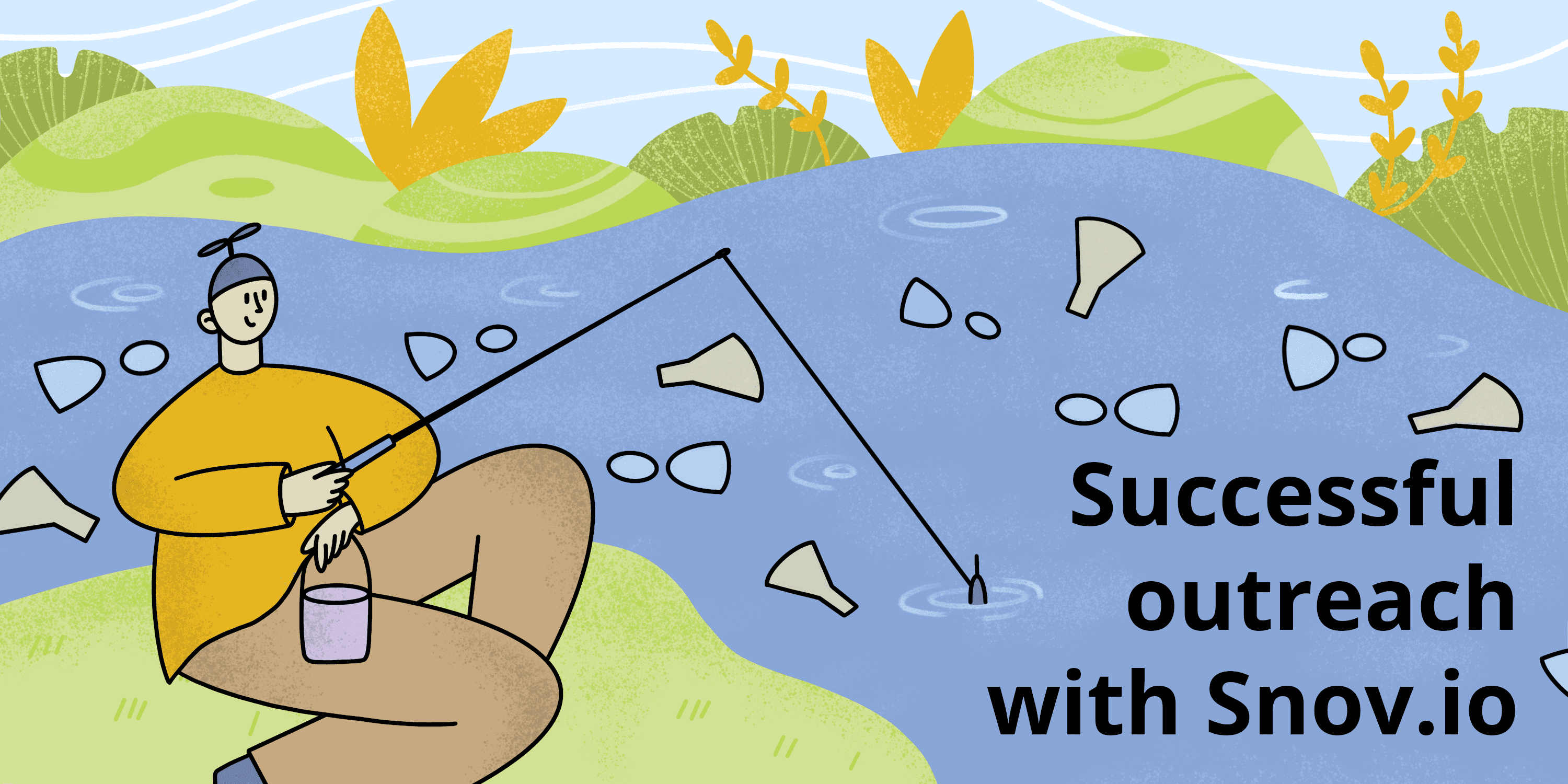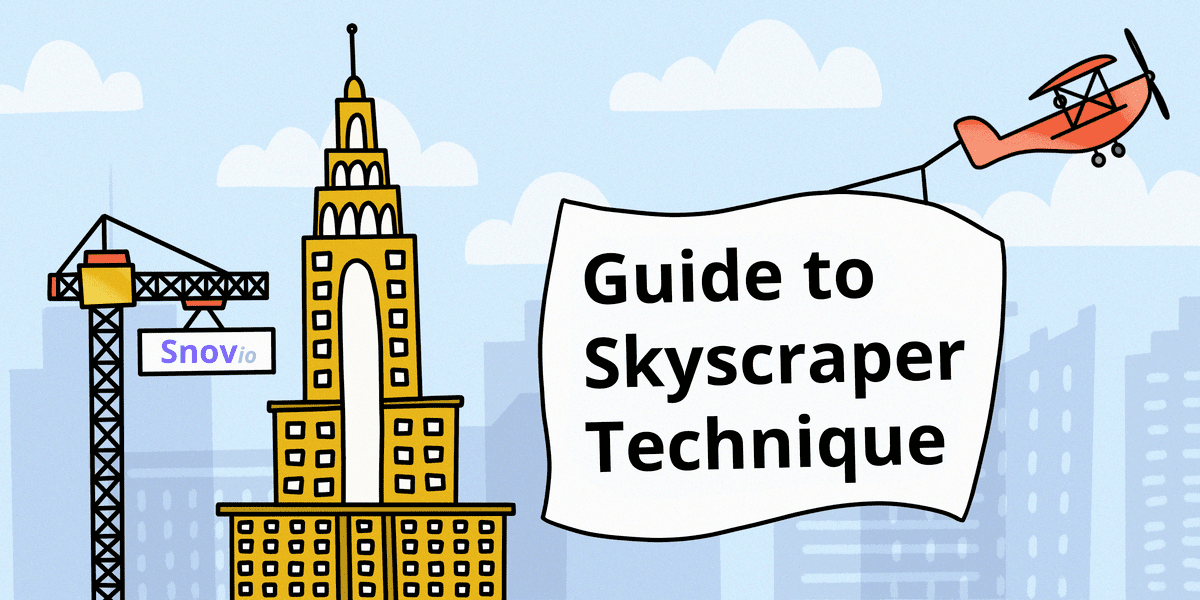If you are a marketer or a business owner, it’s with 100% assurance that you’ve already asked yourself ‘How can I get backlinks to my site to increase visibility and earn more organic traffic?’
Things get more complicated when you realize you need the links that will be authoritative and not sponsored or paid for. Not a surprise 41% of SEO experts consider link building the most difficult part of search optimization.
In this article, we’ll highlight some advanced link-building tips we were lucky to get from Backlinko’s recent research and show how you can find verified contacts and bring these tips into action with Snov.io.
But let’s start with the basics first.
Outline:
What is link building?
Link-building is a practice of increasing the number and quality of inbound links (backlinks) to a website with the goal of improving search engine rankings. Among common link-building strategies are content marketing, email outreach, public relations, broken link building, and so on.
Backlinks are a go-to ranking signal for Google, which now focuses on their quality more than ever. But what makes a good link?
Here are a few things you should keep in mind while finding a quality link:
- Page authority. Links from high-authority sites give you a higher PageRank than other non-authoritative pages.
- Website authority. A no-name blog will give you little impact in comparison to websites like Forbes.
- Website relevancy. If you are running a sales blog, getting a link from an authoritative site about irrelevant topics such as health and nutrition won’t give you any profit. Based on statistics, 84.6% of surveyed specialists consider relevance to be the main metric for evaluating link quality.
- Link position. You’ll hardly benefit from links placed somewhere in sidebars or a page footer. Those that can bring you desired results are located in the middle of the page content.
- Link anchor text. That’s a text you click to get from one web destination to another. Google uses it as a ranking signal.
- Link co-occurrences. Google uses text around your link to understand what your page is about.
- Editorially-placed link. An editorially-placed link means that someone linked to you naturally because they simply liked your content, so it makes a quality link.
- Guest-posting. If you publish a guest post on a site that exists only for publishing guest posts or on a platform that has no meaningful relation to yours, that’ll be a red flag for Google to consider your guest-posting as spammy.
- Nofollow vs. dofollow links. If on checking the code of the link you see the “rel=”nofollow” tag, it means Google won’t take this backlink into account when determining SEO value. So, you should be interested in “dofollow” links.

Now that you understand what links to focus on, let’s dive deeper into how to succeed in your link-building efforts.
Link-building strategies from Backlinko
Brain Dean offers three link-building strategies destined to bring you top results:
- Resource page link building
- Broken link building
- The Skyscraper technique
We’ve dedicated a separate post to the Skyscraper technique where we discussed it in full brilliancy and shared some motivating use cases, so I suggest we consider what’s so charming about two other strategies.
Resource page link building
The gist of this strategy is the following: you find the page that links to the great content on a particular topic and offer your best-fit content for that resource page. Here’s how the process goes step by step:
Step 1. Find resource pages
Use the following search strings that have been designed specifically to find resource pages in Google:
- “Keyword” + inurl:links
- “Keyword” + “helpful resources”
- “Keyword” + “useful resources”
- “Keyword” + “useful links”
Step 2. Analyze the resource page
As soon as you’ve found a resource page, it’s high time to identify whether the link from this page will bring you any profit. Analyze how authoritative this page is by checking its rating. You can do it using Ahrefs:

Step 3. Find (or create!) your best-fit content
Now you should offer something that would fit this resource page better than anything else.
Step 4. Contact the resource page owner
Brian Dean suggests using the following script:

Source: Backlinko
Note: To contact the resource page owner with your offer, go to the website’s Contact us page, which will contain the necessary contact information. Alternatively, you can use the Snov.io Email Finder tool to get the email address right from the resource page.
Broken link building
The strategy consists in finding a source with many outbound links, detecting those that are broken, and offering a replacement. What’s charming about this strategy is that you bring value to someone’s website, which increases your chances of getting a backlink.
Let’s find out how it works:
Step 1. Install Check My Links or LinkMiner
Brain recommends both tools for finding broken links on any page.

Step 2. Find pages with many outbound links
The page that has lots of links overall has a bigger chance of having broken links. In this context, resource pages will be your real finding.
Step 3. Find broken links
As soon as you’ve got to the page with many links, run the extension you’ve just installed and let it detect broken links in the text.

Step 4. Contact the site owner about the broken link
Now you just need to find the contact details of the site owner, email them about the broken link, and suggest the link to your content instead of the broken one. Here Brian Dean suggests another useful script:

Source: Backlinko
To exemplify the broken link-building approach, he also shares his own success story using this strategy.
Brian used search strings to find pages with lots of outbound links and detected broken links with the help of the Check My Links tool. Then he emailed the owner of the content about the broken links and offered to replace them with his content:

The content owner liked the idea, so Brian sent them the URL of the broken link and a piece of content from Backlinko as a new working link:

The link Brian offered was added.

Link-building best practices
Backlinko has been persistent in collecting the best of the best practices of link building over the years and is generous to share them. So, let’s take a look at their list of advanced link building tips:
Use link reclamation
Often, you are not linked to when mentioned, although you should be. That’s how it looks like:

You can detect such unlinked mentions using Buzzsumo and contact the content owners with a friendly push to turn them into valid links.
Create visuals
About 91% of people prefer visual content over traditional text-based media types. We do love images! So by visualizing your concepts and ideas, you’ll have more chances to see them used by bloggers somewhere in their posts, which will make them link back to you.
Use Google reverse image search
What if you’ve created a bright infographic, but your image has been used without attribution?
A tip from Backlinko is to check it with Google reverse image search. Don’t get upset if you see someone has used your visuals! Instead, use it as a bonus opportunity to ask for a link (just like with link reclamation).
Send feeler emails rather than asking for a link straightaway
You can use a two-step process of asking for a link. That’s when you don’t just go for the close in the very first message, but start with a brief feeler email and then proceed with another more personalized message that contains your offer.

Send emails in the afternoon
Backlinko has analyzed many emails to come to the conclusion that the best time to send them is in the afternoon (in the recipient’s local time). That’s when there is usually less competition in their Inbox.
Note: You can schedule your emails and easily adjust your email outreach to your individual needs with the Snov.io cold email software.
Use the Link Intersect tool
Why not analyze links to your competitors? When someone links to other websites in the same niche, they’ll most likely link to you, if asked. What will come in handy is the Link Intersect feature from Ahrefs. You can simply list 2 or 3 competitors, and the tool will show you who links to them.

Leveraging link-building software can streamline your SEO efforts by automating tasks like identifying link opportunities and tracking backlinks. Tools like Ahrefs and Snov.io save time, provide data-driven insights, and help maintain a competitive edge in 2025’s evolving landscape.
Use lists of recommended link targets
You’ve probably come across something like best blog lists, haven’t you? Backlinko advises that you use them as a good link-building opportunity (same as resource lists, remember?).
Link-building case from Snov.io
To show how some of the above-mentioned strategies and tips work in practice, we’ve decided to share one of the recent cases from Snov.io.
Our goal wasn’t to build links via mentions. We were interested in guest-posting, so we’ve chosen a broken link strategy as a personalization hack.
Let’s look at how we ran it step by step:
Step 1. We came across a broken link in one of the posts about sales enablement. Getting linked to by the company that was running the sales blog was a sound idea as this blog is relevant to our product and echoes the topics we commonly discuss in our articles. So, apart from writing a guest post, we had a chance to exchange our experiences.
Step 2. After the research, we’ve found a person in charge of the company’s blog. Then we used Snov.io Email Finder to get this person’s email address.
It’s easy! If you know a person’s name and a company domain, you can use a Single Email Search option that provides you with the targeted email in less than a minute, while Email Verifier automatically checks this email address for validity:

Note: If you are interested in getting many contacts at once, Email Finder allows looking for emails in bulk based on different parameters (company’s domain, social media links, etc.).
Step 3. Finally, it was the right time for email outreach. Using cold email software, we crafted a brief feeler email and set its delivery time for 1 pm (just like Backlinko recommended):

See how personalized and relevant the message is. And it did get a response:

Step 4. Now that we’ve got a friendly reply, and the recipient mentioned they would like to cooperate with us, we had a green light to come up with the offer. As our goal was guest-posting, we asked about writing a guest post:

The response was positive, so we discussed the topic, wrote the post, and they agreed to publish it:

What did we gain from it? The guest post was written by our expert and contained a link to our website — the desired goal has been achieved.
The main takeaway: The broken link strategy and the above-mentioned tips work just fine. What you need to do is to think proactively and never forget about the personalization of your email outreach.

Link Building Outreach From A To Z With Snov.io
November 7 2025

13 SEO Tools To Help Your Outreach Campaign In 2025
August 29 2025
Wrapping up
Link-building is hard unless you start enriching your knowledge and practicing tactics that have proven effective. More so, as link-building strategies continue to evolve, you should be prepared for constant learning and bringing the best practices to life.
Now that you are packed with some of the most effective tips, it’s your turn to demonstrate how they perform. Take the challenge and use Snov.io to accompany your link-building journey!




